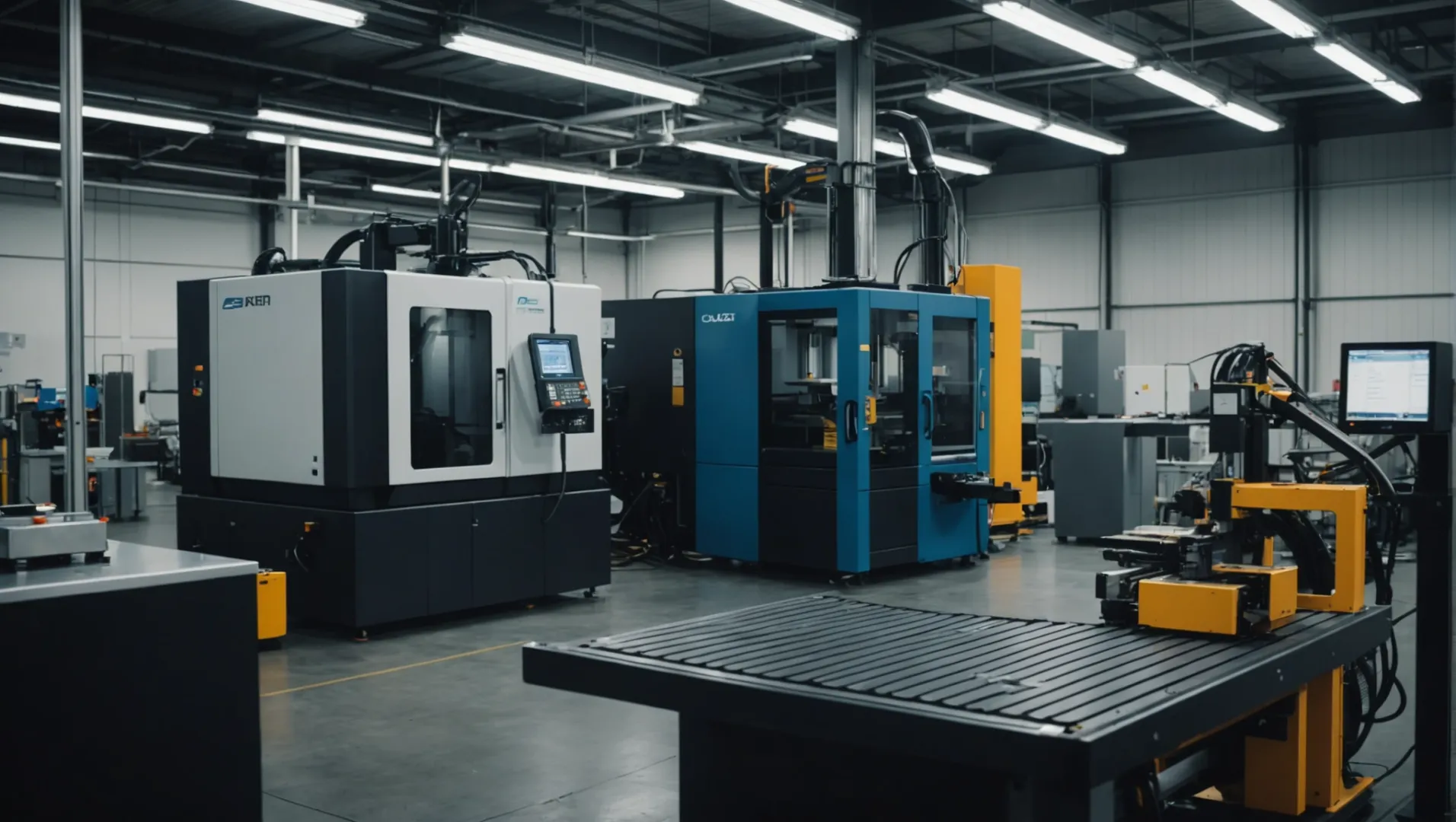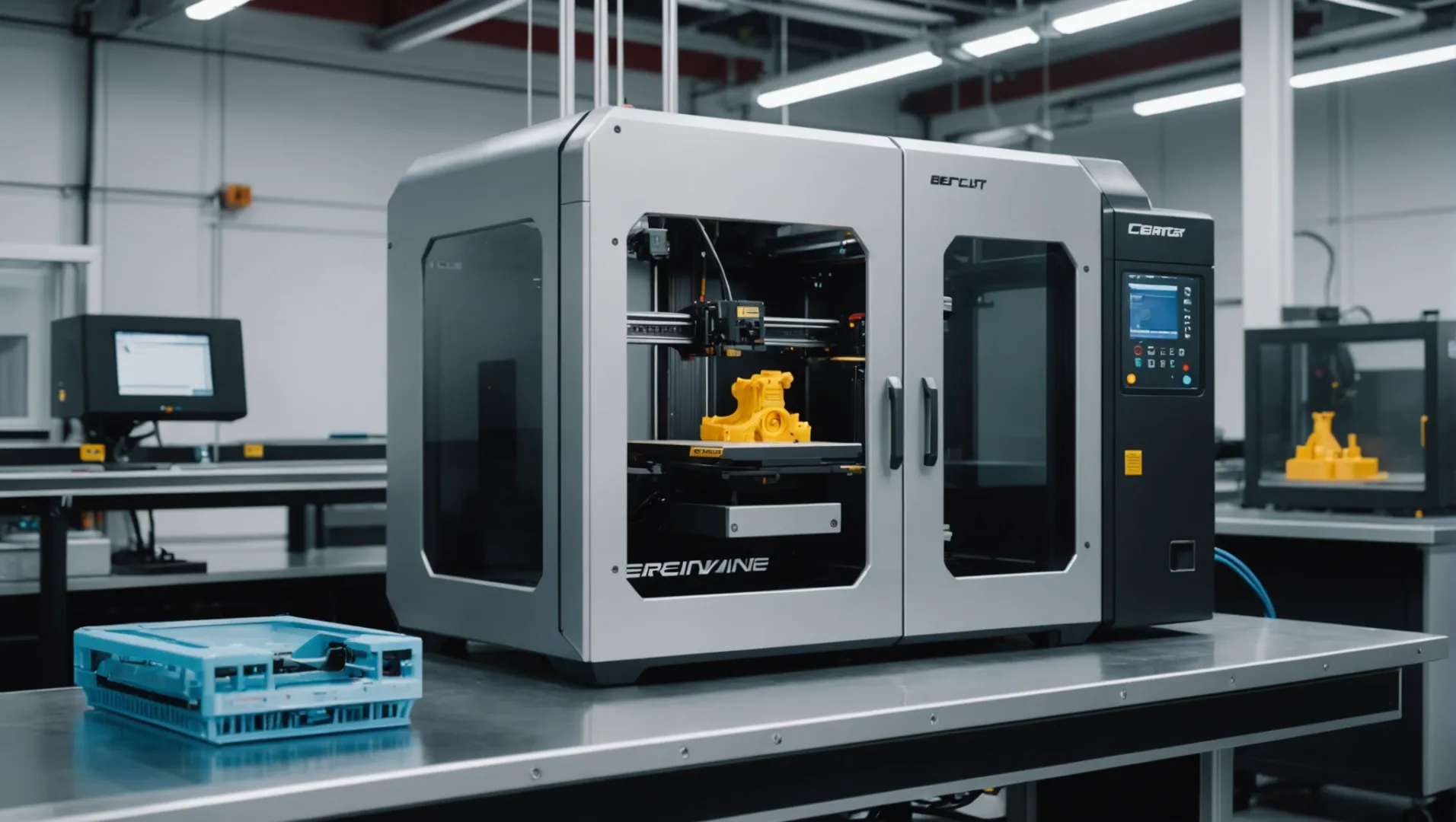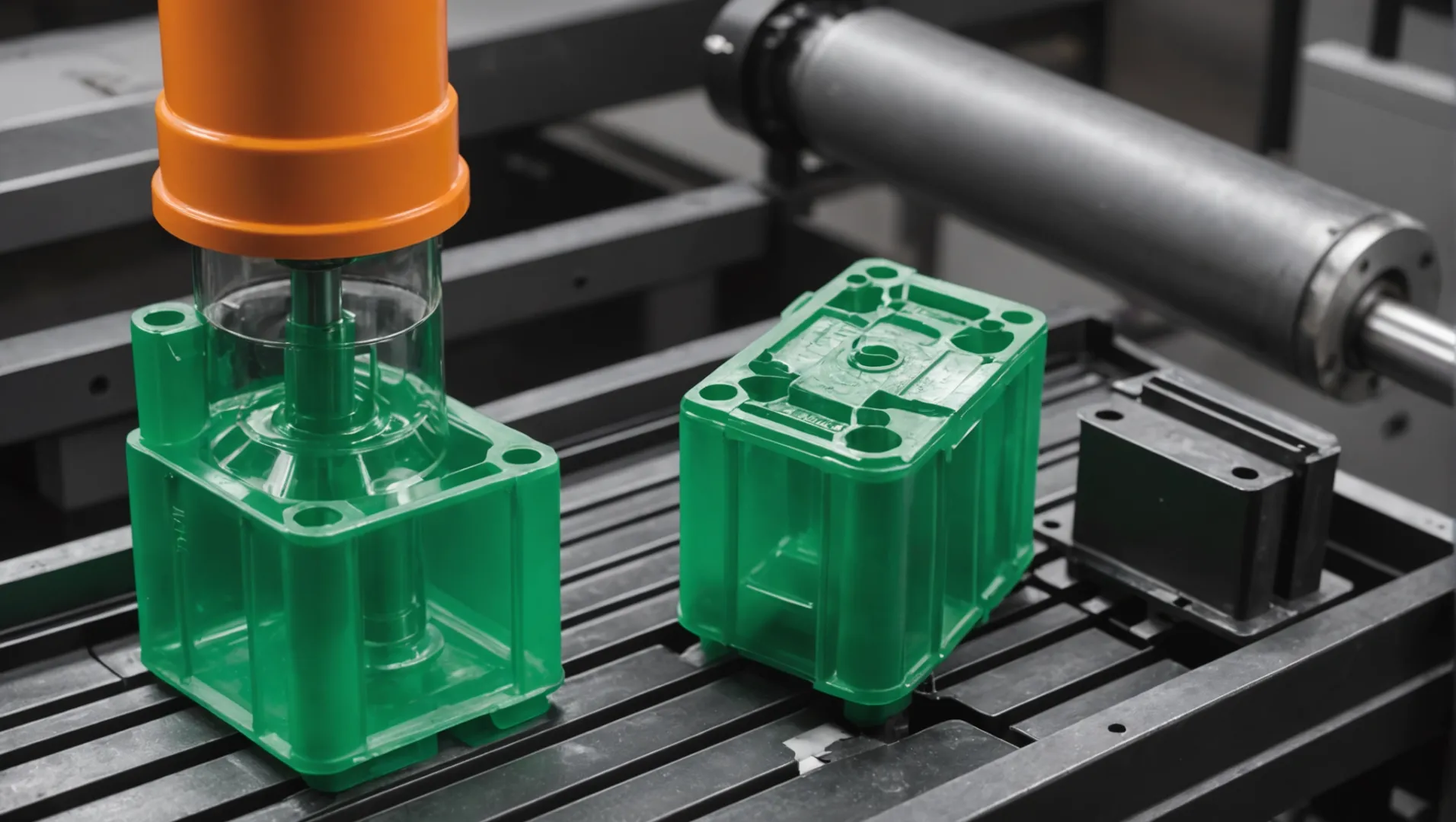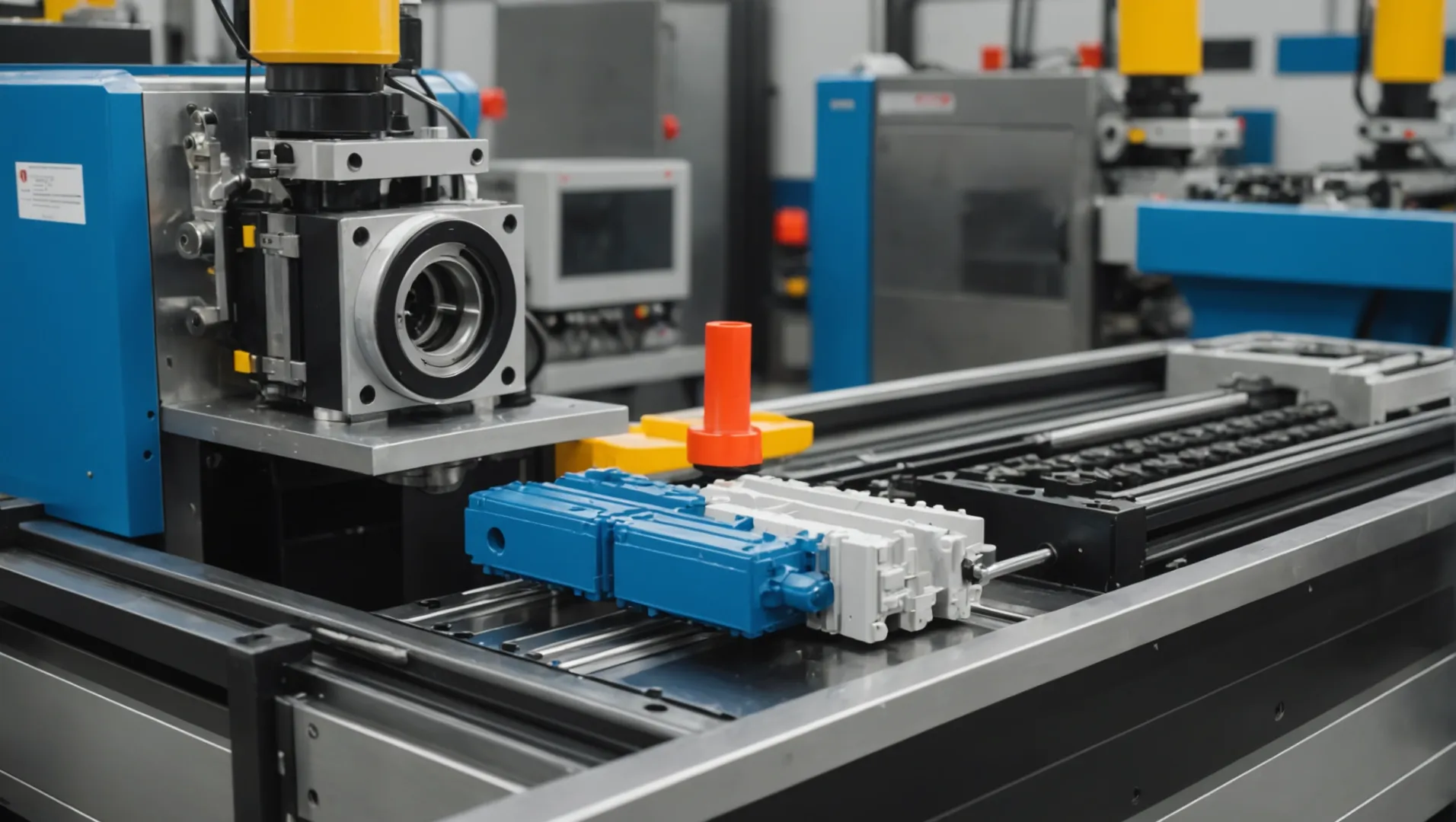
Traditional injection molding is not always suitable for every project.
Some of the best alternatives to injection molding include 3D printing, blow molding, extrusion molding, and thermoforming. Each method offers unique advantages in terms of cost, production volume, and material capabilities, making them suitable for various project needs.
Injection molding appeals to many factories for efficient mass production. However, looking at other options might uncover better choices for unique needs like small batch production or complex shapes. Search more to find the way that truly matches your project aims.
3D printing is more expensive per unit than injection molding.True
3D printing costs higher for each unit without a mold, perfect for few quantities.
How Does 3D Printing Compare to Traditional Molding Techniques?
Wonder about how 3D printing compares to traditional shaping methods such as injection molding?
3D printing offers flexibility in design and customization, making it ideal for small batch production and complex shapes. Traditional molding techniques like injection molding excel in high-volume, cost-effective production with durable materials. Each method caters to different manufacturing needs, depending on scale, complexity, and material requirements.

The Basics of 3D Printing
3D printing, also called additive manufacturing, builds items by layering material. This method allows crafting of complex shapes that are tough or not possible with old-style molding methods1. Popular 3D printing techniques now include Fused Deposition Molding (FDM) and Light Curing Molding (SLA). They permit makers to form things without molds, making them very good for custom designs and prototypes.
Comparing Efficiency and Cost
For production speed, traditional molding techniques like injection molding remain best for high amounts. Injection molding reduces costs per item after the mold is ready, ideal for large productions. However, 3D printing costs more per item but shines in small amounts and detailed shapes without the big starter costs of mold making.
| Technique | Best Suitability | Cost Efficiency | Production Amount |
|---|---|---|---|
| Injection Molding | Large-scale production | Low after mold creation | High |
| 3D Printing | Customized & small series | Higher per unit | Lower, but very adaptable |
Material Capabilities and Applications
Material choice affects the final product’s traits a lot. Injection molding works with many materials, bringing durability, which is vital for things under stress and use. 3D printing materials got better but show limits in strength compared to ones used in old-style molding techniques2.
3D Printing Applications: Perfect for sectors needing fast prototypes, custom products and artistic designs. It probably helps quickly refine designs in places such as medical tooling and aerospace.
Traditional Molding Applications: Great for mass-producing consumer items, car parts and any need where strength and uniformity matter.
Design Flexibility
3D printing’s main advantage is its unmatched design flexibility. Complex shapes, inner parts and delicate details emerge easily, without extra tools or many part connections. Traditional ways like blow molding3, extrusion and thermoforming have limits based on mold shapes, often forcing redesigns or trades on complexity.
In conclusion, although 3D printing brings new possibilities in design freedom and tailoring, traditional methods stay vital for efficient large-scale creation. Choosing the right technique depends on your project’s needs for amount, expense, material strength and complexity.
3D printing is ideal for high-volume production.False
3D printing works best for producing in tiny amounts, not for large quantities.
Injection molding is cost-effective for large-scale production.True
After creating molds, injection molding reduces the cost of each unit a lot.
What Are the Benefits of Blow Molding Over Injection Molding?
Blow molding and injection molding stand as popular plastic production methods. Yet, each holds unique benefits.
Blow molding offers benefits such as lower cost, simpler equipment, and suitability for producing hollow, thin-walled products. Unlike injection molding, it excels in manufacturing containers like bottles and barrels, making it an ideal choice for products requiring specific shapes and material efficiencies.

Understanding Blow Molding and Injection Molding
Both blow molding and injection molding are pivotal in the world of plastic manufacturing, yet they cater to different needs.
Blow molding, as described in the principle of blow molding4, involves inflating a heated plastic tube within a mold until it forms the desired shape. It’s particularly effective for creating hollow parts such as bottles, containers, and even some toys.
On the other hand, injection molding involves injecting molten plastic into a mold to form solid parts. It’s widely used for manufacturing complex components that require high precision.
Key Advantages of Blow Molding
-
Cost Efficiency: The equipment required for blow molding is generally simpler and cheaper compared to injection molding machines. This makes it a viable option for startups or companies with budget constraints.
-
Ideal for Hollow Products: Blow molding is unmatched when it comes to producing hollow products with thin walls. This includes everyday items like beverage bottles, shampoo containers, and fuel tanks.
-
Material Efficiency: With blow molding, you can achieve high material efficiency due to its capability to create products with uniform wall thickness without excessive waste.
Comparative Analysis: Blow Molding vs. Injection Molding
| Feature | Blow Molding | Injection Molding |
|---|---|---|
| Cost of Equipment | Lower | Higher |
| Suitability for Hollow Products | Excellent | Limited |
| Product Complexity | Simple shapes preferred | Capable of complex geometries |
| Production Volume | High-volume production possible | Economical at both low and high volumes |
| Material Variety | Limited compared to injection molding | Extensive range of materials available |
Applications and Industry Use Cases
Blow molding is predominantly used in industries where hollow objects are a necessity. For example, the manufacture of plastic containers5 is a significant area where blow molding shines due to its efficiency and cost-effectiveness.
However, in sectors where precision and complex shapes are required, such as automotive or electronics, injection molding might be the better choice. Here, the ability to produce intricate designs with tight tolerances is crucial.
Conclusion: Choosing the Right Technique
Ultimately, the choice between blow molding and injection molding hinges on the specific requirements of your project. Whether you’re focused on cost savings or product design intricacy will guide your decision. Evaluate your product needs against the strengths of each technique to determine the best fit.
Blow molding is more cost-effective than injection molding.True
Blow molding machines are easier and less expensive, lowering expenses.
Injection molding is ideal for making hollow products.False
Blow molding is best for producing hollow, thin-walled items.
Is Thermoforming a Viable Option for Large Scale Production?
Are you considering thermoforming for your big production tasks and thinking if it compares well with other techniques?
Thermoforming is a viable option for large-scale production of large-sized, low-cost products, especially in packaging. Its lower mold costs and ability to produce bigger items efficiently make it a preferred choice, despite limitations in precision and strength.

Understanding Thermoforming in Manufacturing
Thermoforming involves heating a plastic sheet until it’s soft, then shaping it using a mold through vacuum or pneumatic pressure. Once cooled, the plastic retains the shape of the mold, resulting in the desired product. This technique is widely used in food packaging6, such as trays and blister packs.
Advantages of Thermoforming
- Cost-Effectiveness: The molds used in thermoforming are significantly less expensive than those in injection molding, which can reduce initial setup costs.
- Efficiency in Large Items: Thermoforming is particularly efficient for producing larger items like trays and containers due to its capacity to handle large surface areas without complex machinery.
| Feature | Thermoforming | Injection Molding |
|---|---|---|
| Cost | Lower mold cost | Higher mold cost |
| Precision | Lower precision and strength | High precision and strength |
| Suitable Products | Large-sized, simple shapes | Complex and smaller components |
| Material Efficiency | Less efficient with material usage | More efficient with material usage |
Challenges in Large Scale Production
While thermoforming is effective for certain applications, it does face challenges:
- Product Strength and Precision: The strength and precision of thermoformed products are generally lower than those produced through injection molding.
- Material Waste: The process can be less efficient with material usage, leading to higher waste levels compared to methods like injection molding.
Comparing with Other Methods
When considering alternatives like blow molding7 or extrusion molding8, it’s important to weigh each method’s strengths against the specific requirements of your project. For instance, blow molding excels in creating hollow containers, while extrusion is ideal for continuous profiles like pipes and rods.
By understanding these nuances, manufacturers can choose the right method that aligns with their production goals, balancing factors like cost, efficiency, and product requirements.
Thermoforming is cost-effective for large-scale production.True
Thermoforming employs cheaper molds, lowering initial setup costs.
Thermoforming provides higher precision than injection molding.False
Thermoforming provides less accuracy and durability than injection molding.
How Do Extrusion Molding and Injection Molding Differ?
Knowing the differences between extrusion molding and injection molding is important for better results in your manufacturing work.
Extrusion molding and injection molding differ primarily in their processes and applications. Extrusion continuously pushes melted material through a die for uniform profiles, while injection molds material into complex shapes. These differences affect production speed, cost, and design capabilities.

Process Mechanics
Extrusion Molding involves heating plastic raw materials until they melt. The material is then pushed through a screw extruder, continuously forming shapes like pipes or sheets. This process is efficient for producing long, uniform products.
Injection Molding, on the other hand, melts plastic granules before injecting them into a closed mold where they cool and solidify. This technique is ideal for creating intricate, detailed shapes with high precision.
| Criteria | Extrusion Molding | Injection Molding |
|---|---|---|
| Output Form | Continuous profiles (e.g., pipes) | Individual parts (e.g., toys) |
| Complexity | Limited to simpler shapes | Capable of complex designs |
Applications
Extrusion molding is extensively used in construction and packaging industries9 for items like plastic tubing and sheets due to its ability to produce long, consistent sections efficiently. Meanwhile, injection molding’s precision makes it suitable for creating items such as automotive parts or consumer electronics housings.
Cost Considerations
The continuous nature of extrusion molding10 often results in lower per-unit costs for high-volume production of simple shapes. Injection molding, however, can be more expensive due to the complex tooling and longer setup times required for detailed designs, though it becomes more cost-effective with larger production runs.
Production Speed and Efficiency
Extrusion offers high-speed production for straightforward profiles, making it ideal for mass production. Injection molding’s cycle times vary depending on part complexity but allow for simultaneous production of multiple parts in multi-cavity molds, enhancing efficiency.
By understanding these distinct processes, manufacturers can choose the most appropriate method for their specific production needs.
Extrusion molding creates complex shapes efficiently.False
Extrusion works well for even profiles. It struggles with complicated shapes.
Injection molding is cost-effective for high-volume runs.True
Large runs result in lower costs for each item despite spending on tools.
Conclusion
Knowing these options assists in selecting the best match for your project’s requirements. Explore further to create new ideas and improve your production plans.
-
Understand how traditional methods offer efficiency in high-volume production.: Traditional plastic injection molding, on the other hand, utilizes more manual labor. This makes scientific injection moldings more efficient. As the process is … ↩
-
Learn about material strengths suitable for different manufacturing needs.: 3D printing is much faster than many traditional manufacturing methods when producing small to medium objects. ↩
-
Explore the limitations of blow molding in producing complex shapes.: 2.1 Limited Wall Thickness Control: Blow molding may have limitations in achieving precise wall thickness control, especially for complex parts. ↩
-
Discover how blow molding shapes hollow products effectively.: It involves heating a plastic tube, called a parison or preform, and inflating it within a mold. The parison is placed between two mold halves, which define the … ↩
-
Learn how blow molding excels in making containers efficiently.: Blow molding is an important industrial process for making one-piece hollow plastic parts with thin walls, like plastic soda bottles, or water … ↩
-
Learn how thermoforming benefits the food packaging industry.: Thermoform packaging is durable, resilient, and tamper-resistant. It protects the products while in transit and offers a number of seal options. ↩
-
Discover why blow molding might suit your production needs.: Rotational molding offers advantages such as design freedom, cost-effective tooling, and enhanced durability. ↩
-
Explore differences between extrusion and injection molding.: Injection molding offers strength to products, whereas extruded products are comparatively weaker. Injection molding is considered expensive due … ↩
-
Explore how extrusion molding benefits construction and packaging industries.: Extrusion moulding is used to form plastic or metal materials into a pre-defined shape. During the process, the material is melted and pushed through an … ↩
-
Learn about cost efficiencies between extrusion and injection molding.: Meanwhile, The extrusion process is less costly upfront, with tooling costs 80% to 90% less than injection molding, but slightly more expensive … ↩






